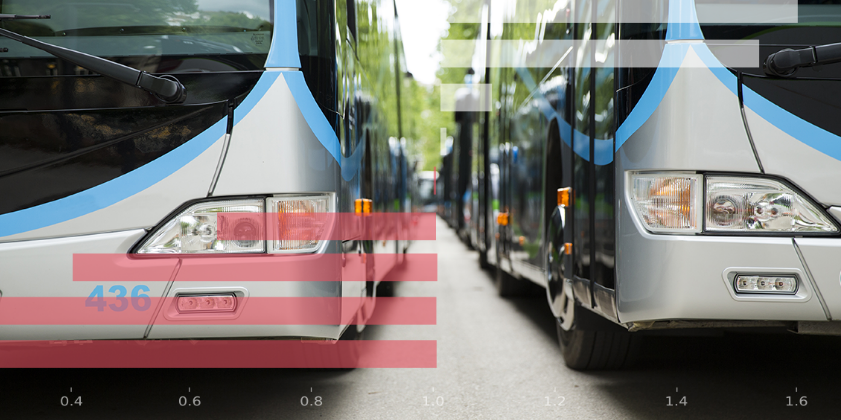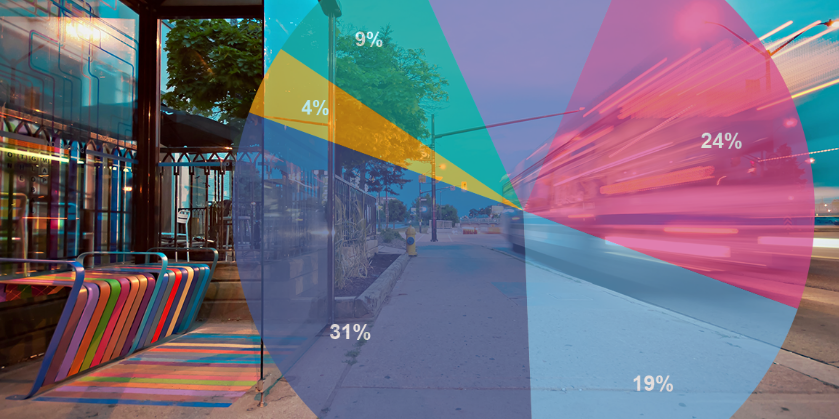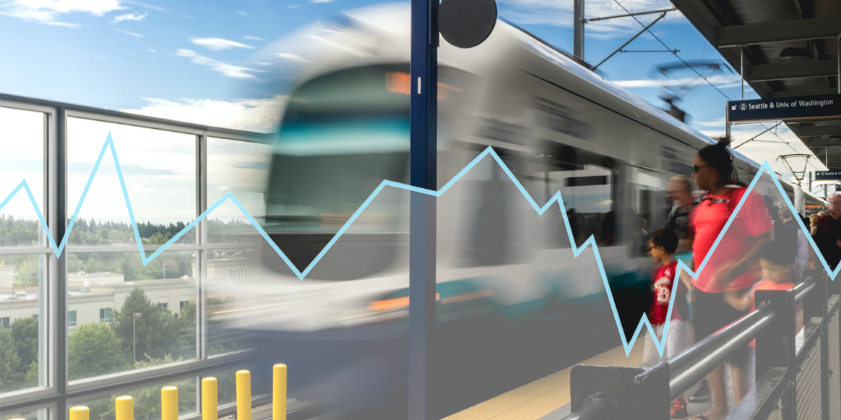/ Our Work / Transdev
Solving Business Challenges with Data
The Challenge | Data Analytics Modernization
First Transit is the largest private-sector provider of mobility solutions in North America, moving more than 300 million passengers annually. Its core mission is to connect people and communities. As the need for transit services expanded, First Transit aimed to solve business challenges with data. It turned to CoStrategix for help to upgrade its architecture and effectively leverage data to expand its mobility services, drive strategic priorities, and to become even more responsive to market demands.
First Transit delivers fixed-route, paratransit, shuttle, and call center operations for cities, municipalities, counties, universities, and airports. The challenge was providing the flexibility needed across a complex operation with so many different transportation models, and hundreds of locations – even as the technology needs of customers are changing.
Duane Thompson, Senior Director of IT, recognized the imperative to modernize the data warehouse to a cloud-based technology stack to meet the demands of the business and elevate business decision-making. With a license renewal of the legacy system looming, First Transit turned to CoStrategix for help in advancing its organizational data and analytics strategy.

Our Solution/Approach
CoStrategix began with a consultative exercise to define an overarching data and analytics system that would align with desired business outcomes and provide a roadmap for engineering. CoStrategix simultaneously got started with the technology modernization effort on a very tight deadline. The team identified key issues and data needed from disparate systems and sources to deliver an updated KPI report within three weeks, so that the business team could make data-driven operational decisions.
Once the immediate need for sunsetting the legacy system was addressed, CoStrategix and First Transit blocked off multiple days for strategic planning. They examined the business priorities, all the data sources and tech tools currently available, imagined what a future solution could look like, and prioritized the many needs according to those that would drive the greatest business value. Then they clarified and refined the data and analytics roadmap to ensure it would be flexible enough to accommodate all the business needs. The result was a multi-step, multi-year process that modernized First Transit’s Data & Analytics footprint while methodically elevating the data and analytics maturity through a set of carefully planned quarterly initiatives closely aligned with the demands of the business.
- Modernizing the data warehouse with leading-edge Azure cloud technologies – and co-locating the data while the new infrastructure was being built
- Implementing a set of powerful dashboards using Power BI visualization tool and providing self-service functionality so that users can find the data they need to deliver insights
- Fixing data quality issues with API ingestion and improving data mapping for cleaner, real-time updates
- Supporting security and protecting sensitive data by masking data so not all stakeholders can view it
- Reengineering the data ingestion process and integrating data assets from a large number of systems, including data streaming for real-time transit management analytics
- Helping to implement data governance and DataOps processes to ensure data quality and address the day-to-day needs of the organization
- Implementing advanced analytical models to progress from merely descriptive analytics to artificial intelligence-driven predictive analytics
- Cataloging data with tags and data lineage tracking, which is especially important for the legal team as they deal with state, federal, and international regulations

As First Transit aimed to enhance its standard operating procedures within an enterprise model, the business and IT teams had to align on which business questions were most critical in the data and analytics roadmap. As Thompson explained: “Technology alone doesn’t solve a business problem – no technology or app is a silver bullet; you have to use technology to support and enhance a business process.”
Some of the business processes that CoStrategix is helping the IT team to support are:
-
Efficiency-building and Lean Operations initiatives
Digitizing a very manual process for managers at 300+ locations to dispatch employees and vehicles and eliminate duplication – saving many hours and significantly enhancing the group’s market competitiveness
Tracking absenteeism and applying an artificial intelligence-driven portfolio of models to proactively forecast optimal staffing levels based on overtime availability, predicted dips/spikes, day-of-the-week trends, upcoming holidays, and more
Performing a time analysis to make more efficient use of operators’ non-drive time in the bus yard
-
An integrated business ecosystem
By integrating back-office apps, internal and 3rd party dispatching systems, and performance-monitoring IoT systems into a singular ecosystem, First Transit is able to automate many processes and work more efficiently. For example, the act of a driver logging into the performance system on a vehicle makes the need to clock in redundant. Similarly, synchronizing employees across the HR, telematics, diagnostics, and AVL systems eliminates the need to manually enter employees into multiple systems of records for enhanced security and compliance
-
Safety initiatives
Creating a Safety Business Review platform to track safety incidents and service-level agreements (SLAs), and spot trends or hot spots to be proactive in resolving them Building an interface that tracks risks from potentially damaging situations – such as a hurricane, forest fire, snowstorm, or accident – and assesses the operational impact in order to modify scheduling and operations for continuity and safety Developing an ML-driven platform that examines patterns and forecasts which vehicles are more likely to experience breakdowns or accidents
-
Democratized data
Automate the work of creating a critical management report so that business leaders can understand and respond to operational performance and efficiency metrics and drive continuous improvement

Results
One way of measuring the success of a data and analytics program is by tracking usage. “The goal,” Thompson said, “is for the analytics tools to become indispensable to the business teams.”
First Transit’s usage of all of its Power BI reports combined increased by 215 percent in the first 6 months. The number of users of the reports increased nearly 300 percent in the same timeframe.
The driving factors behind that increased adoption were data quality and timeliness. It used to take quite a bit of manual and data manipulation time to collect all the data needed for the Daily Dispatch report. Now, the same report can be created in about one hour. If a leader wants to know how many absences there were on a particular day, an analyst used to have to search through payroll, scheduling, punch data, and HR reports. Now that insight can be generated on-demand.
Also, when data used to be collected manually over a long period of time, the reports weren’t really comparing apples to apples. Because data is fluid, the data was being pulled in different states of completeness, and from different points in time. Now that data is ingested continuously, business teams can get the most updated data from a single snapshot in time.
A second way to evaluate success is through the ease of parsing data to make decisions. When data was displayed in long columns of numbers, it was not easy to read or use. Now that the data is presented visually, however, trends and changes can be easily identified and addressed.
One unanticipated result of the new data and analytics system is that it has become a business development asset. First Transit has been successful in winning new business at local transit agencies because of the accuracy and availability of its real-time reporting capability. Thus, data now serves as a sales and customer experience tool, alongside transportation operations.
“Data integration allows us to continue to be the leader in mobility solutions. We want to give our customers the entire picture of the business using metrics,” Thompson said. “Setting yourself up for success means defining a business challenge by using data, and then continuously working to make incremental improvements.”
“The true value of CoStrategix is a strategic partnership at a higher level. They were able to help us strategize and provide real thought leadership on the best approach for our business and the needs of our customers.”

Duane Thompson
Director of IT at Transdev



